Author/Yi Ling Roy Ngerng, Assistant Research Fellow, RSPRC
On October 23, 2019, the Risk Society and Policy Research Center (RSPRC) invited Prof. Dr. Nebojsa Nakicenovic, Executive Director of The World in 2050 (TWI2050) initiative, to give a talk on the transformations required to achieve the Sustainable Development Goals (SDGs). TWI2050 was established by the International Institute for Applied Systems Analysis (IIASA) as an effort to develop evidence-based research to guide policymakers in the implementation of the SDGs, and involved more than 60 authors from about 20 institutions, and 100 independent experts from academia, the government, businesses, as well as from intergovernmental and non-governmental organizations from around the world, to develop global strategies that were published in two reports in 2018 and 2019. The first part of this article highlighted the key points in these two reports, given in the talk by Prof. Nakicenovic. In this second part, we highlight the key points given in the talks by National Taiwan University (NTU) Dean of Science Prof. Chun-Chieh Wu and Taiwan Mobile Social Responsibility Manager Jessica Chou to share on Taiwan's experience in sustainable development, as well as highlights from the question and answer session.
Talk by Prof. Chun-Chieh Wu: Developing Resistance to Manage Climate Change Disasters
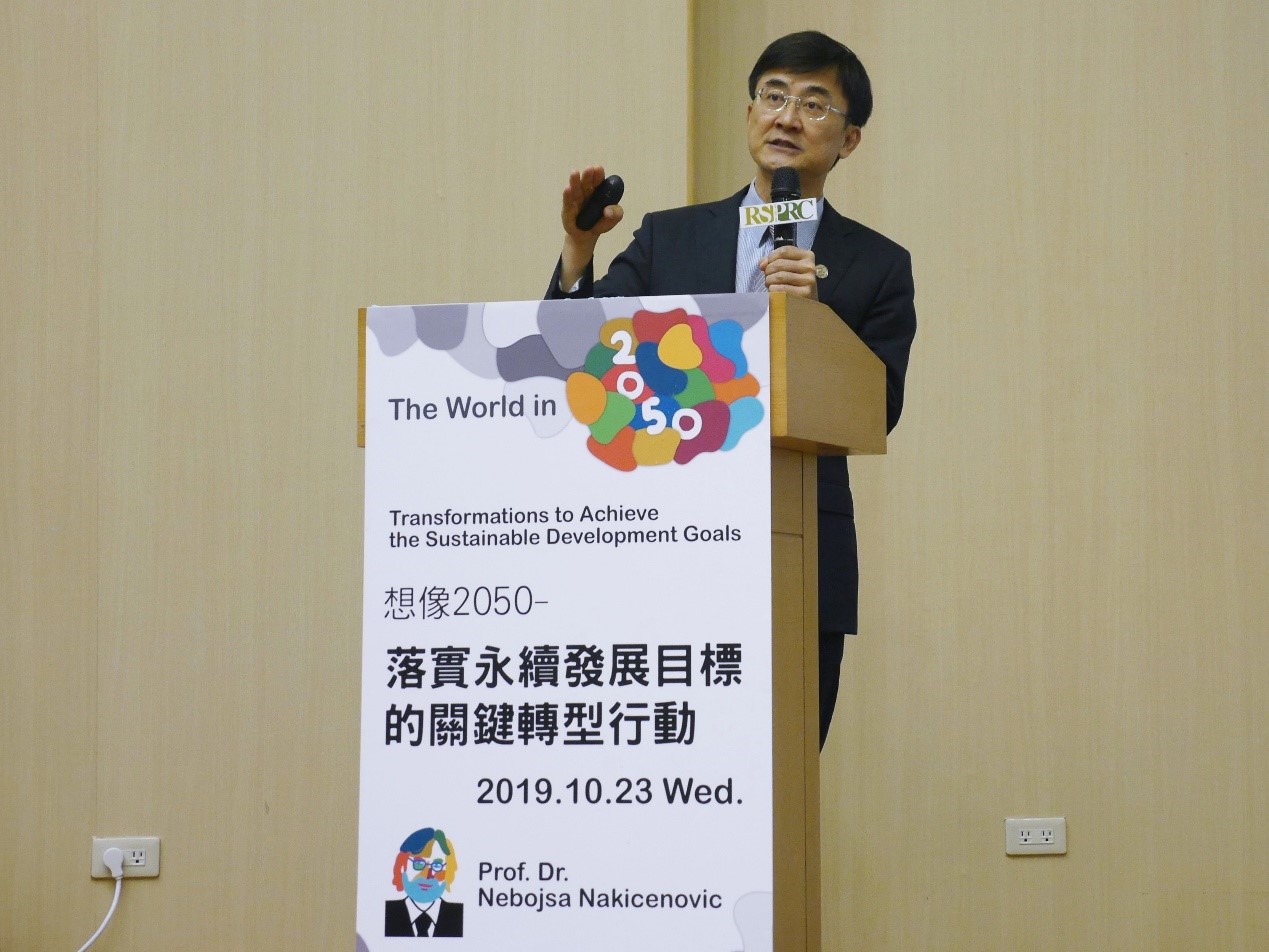
Prof. Chun-Chieh Wu began his talk by pointing out that when he was Director-General at the Department of Natural Sciences and Sustainable Development at Taiwan's Ministry of Science and Technology from 2016 to 2018, he had conducted a scan of the technologies to identify the new and critical ones required to advance the Anthropocene, but these technologies were also required to contribute to fulfilling the 17 SDGs for a better future earth. Big data, green technologies, nanotechnology, quantum technologies and technologies with new materials were some of the important technologies identified.
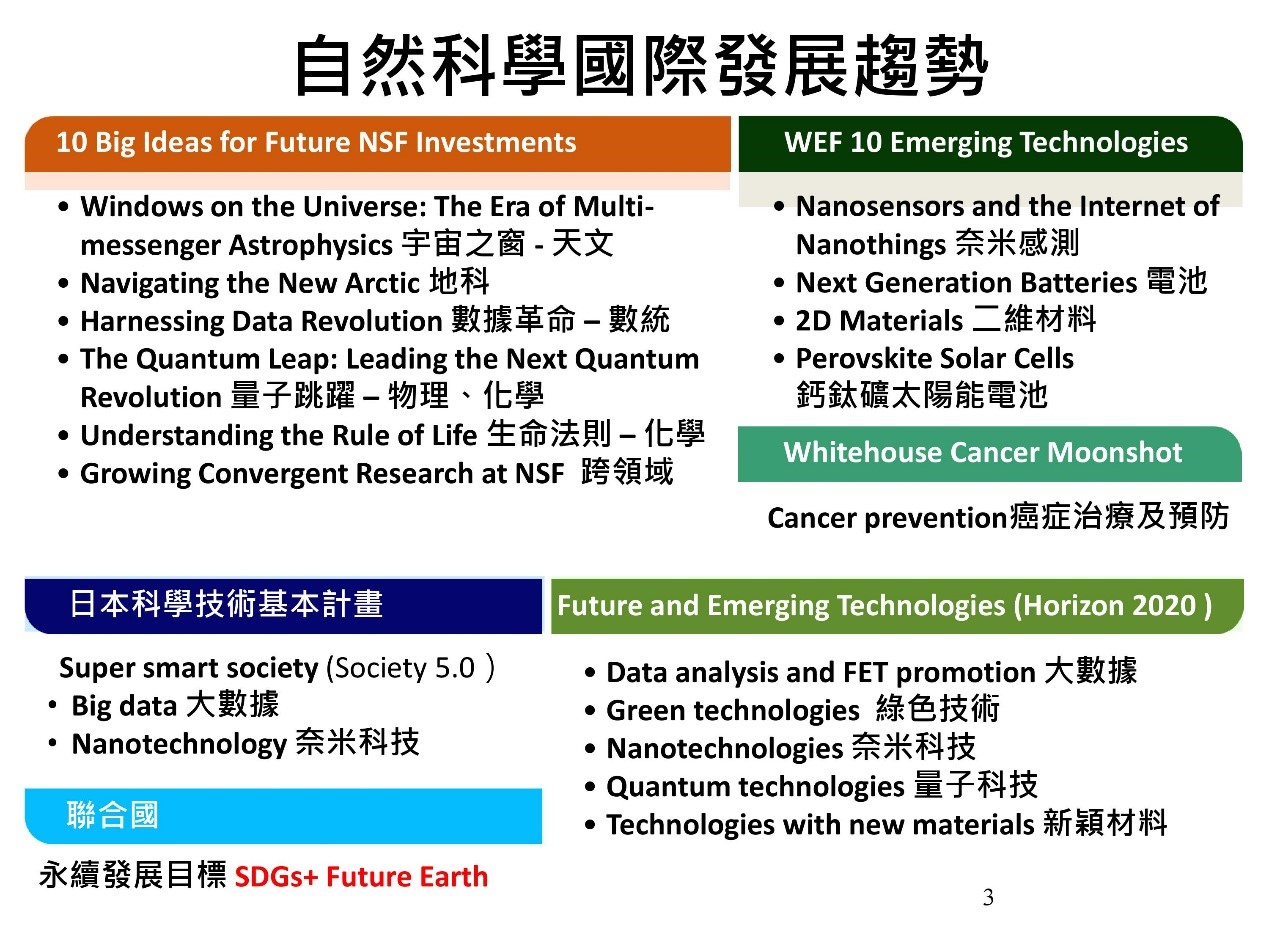
Prof. Wu also pointed out that lessons could be gleaned from technological advances in the past. For example, in the 1950s, engineers discovered that putting lead in gas could increase the combustion of vehicles and energy efficiency, only to find out later that lead has negative effects on the brain. From the 1970s, countries then started switching from leaded gas to unleaded gas, though it took Taiwan until the 1990s to do so. Another example he pointed out was how chlorofluorocarbons (CFCs) were invented by bioengineers as an effective method to cool down refrigerators, though it was later discovered in the 1980s that CFCs acted as a key catalyst in the cycle of ozone depletion. It took an international protocol in Montreal in 1986 to replace CFCs with other products, before the issue was resolved 30 years later. The scientists who discovered that CFCs were depleting the ozone later, Mario Molina, Sherwood Rowland and Paul Crutzen, were later awarded the Nobel Prize in Chemistry in 1995 for their work. Prof. Wu also highlighted a third issue of how humans realized that the industrial revolution has led to the worsening of climate change and global warming, and that there is sufficient evidence today to validate that the climate change being experienced by humans today is anthroprogenic, such as due to the overuse of petroleum and oil products.
Prof. Wu pointed out that in order to address climate change, there is a need to "do better science", so as to develop strategies and make decisions based on scientific understanding, from which to better prepare for the impact of and adaptation to climate change, so as to eventually develop mitigation measures to reduce emissions.
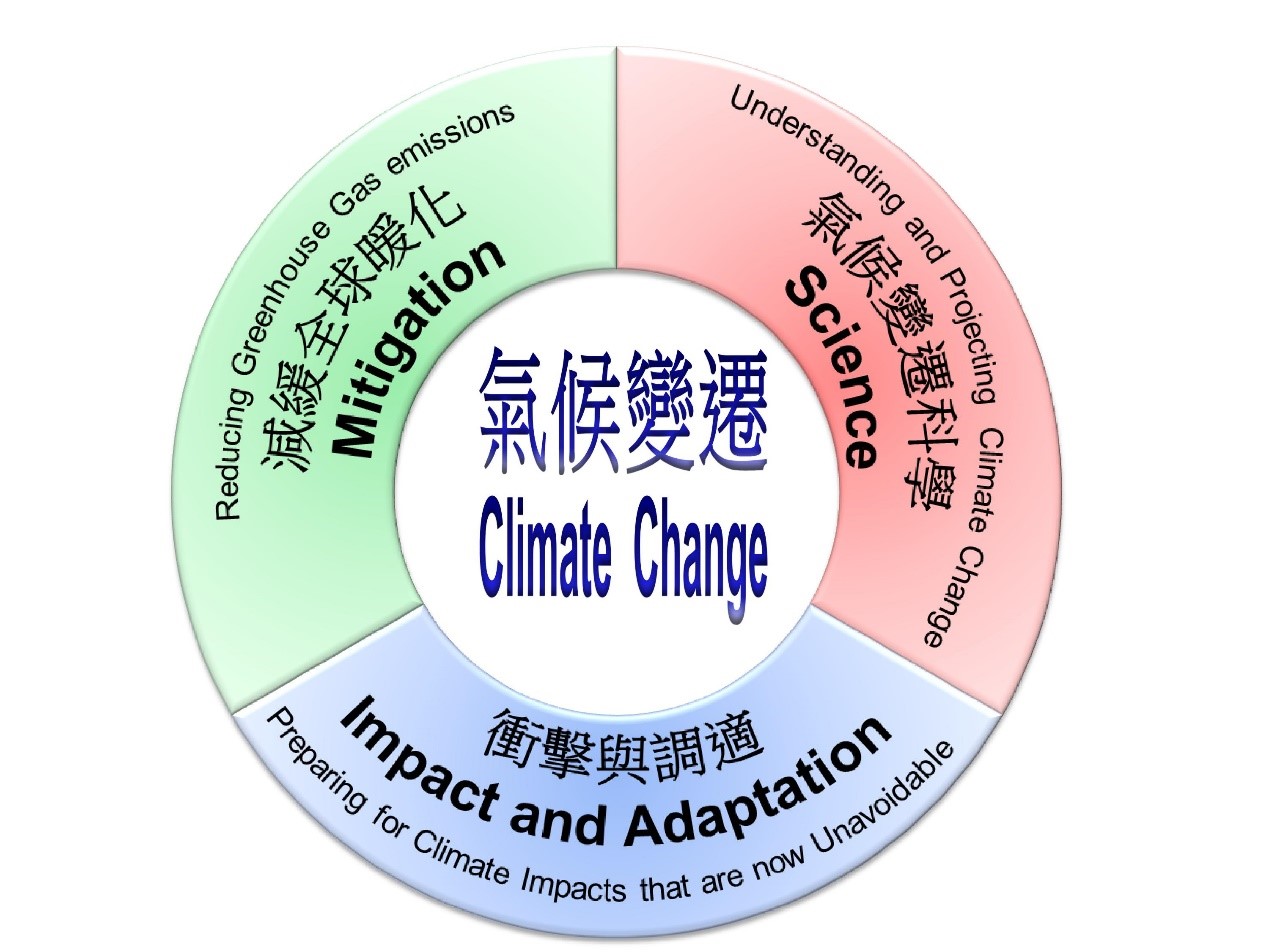
Prof. Wu pointed out that while some scientific research has shown that extreme weather events are a result of anthropogenic climate change and global warming, a systematic study has been going on for the last 40 to 50 years to understand what the exact impact is. Nonetheless, in terms of predicting the impact of climate change, scientists are today better able to predict with more confidence that coastal flooding will likely get worse, and that typhoon rainfall and intensity will likely increase, though it is difficult to say if the number of typhoons will actually increase of decrease, and such questions are still being studied.
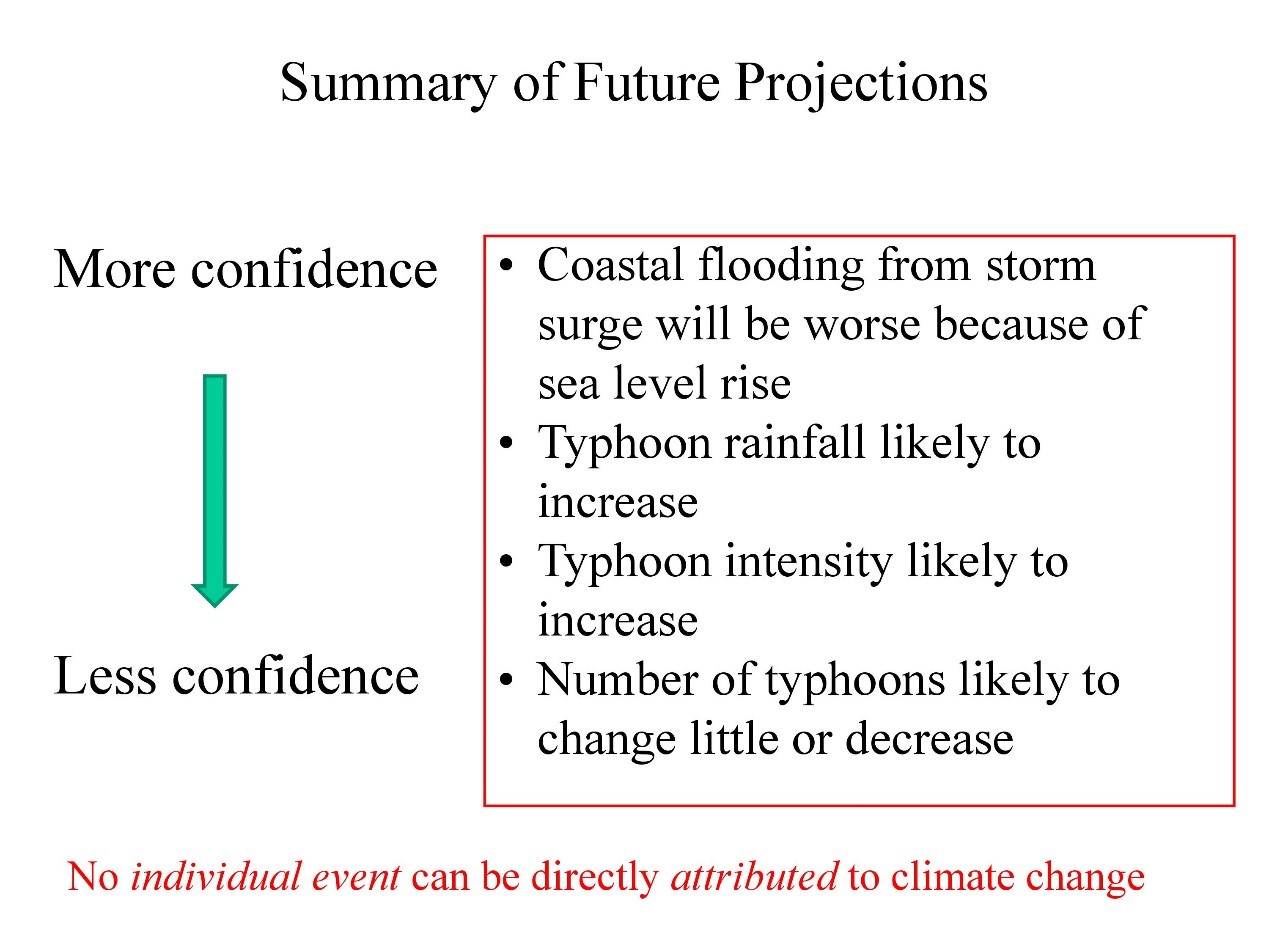
Prof. Wu explained that a smart disaster management and risk management strategy is therefore required to prepare for extreme weather events (as explained in the chart below). In addition, there is also a need to develop better systems to build up resilience against natural disasters, and Taiwan is in a good position for the execution of such strategies, Prof. Wu opined.
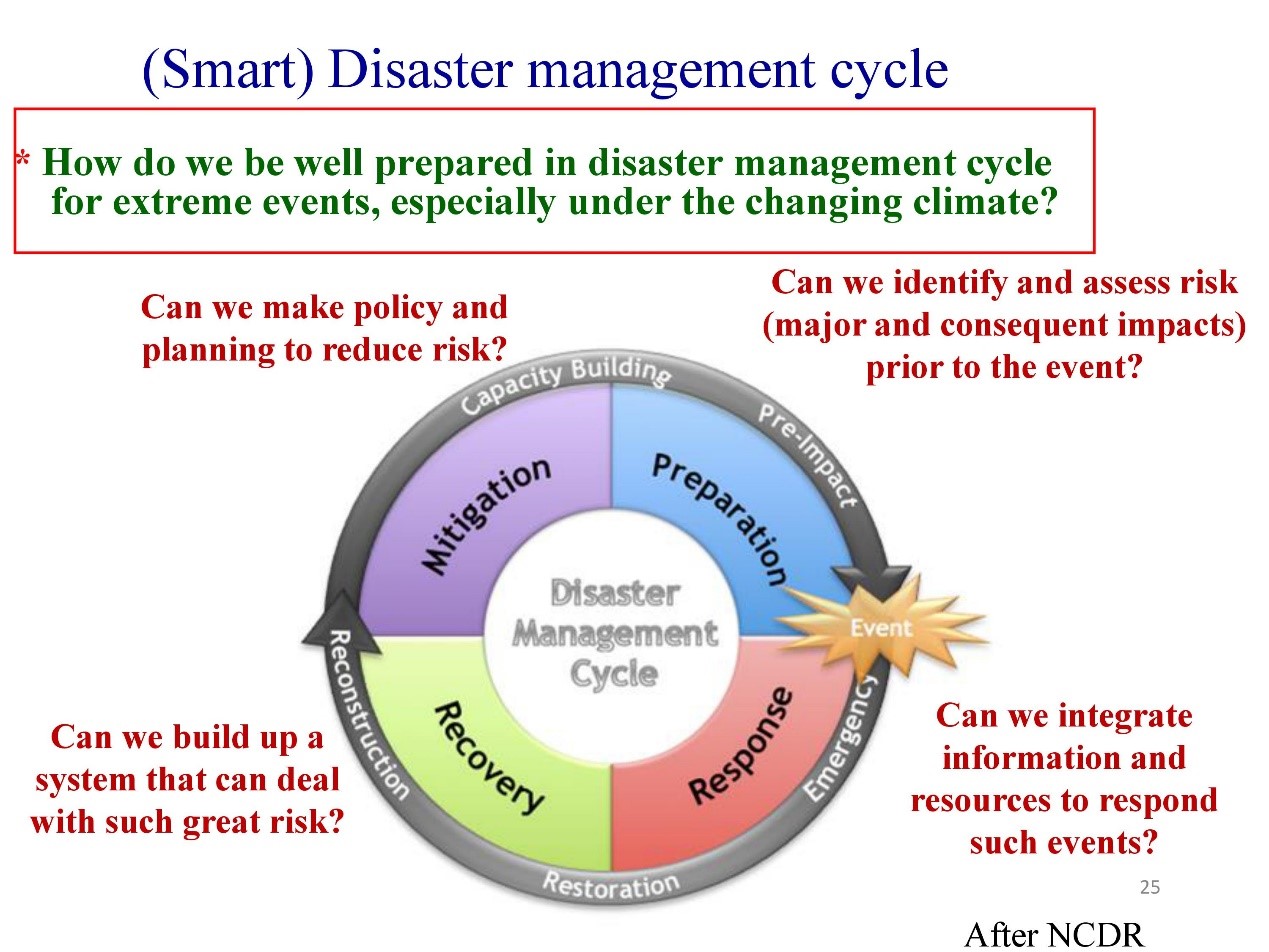
Finally, Prof. Wu emphasized that there is a need to strengthen science and technological alliances to support the governance for sustainability, such as via the Belmont Forum, of which he is a member of its steering committee.
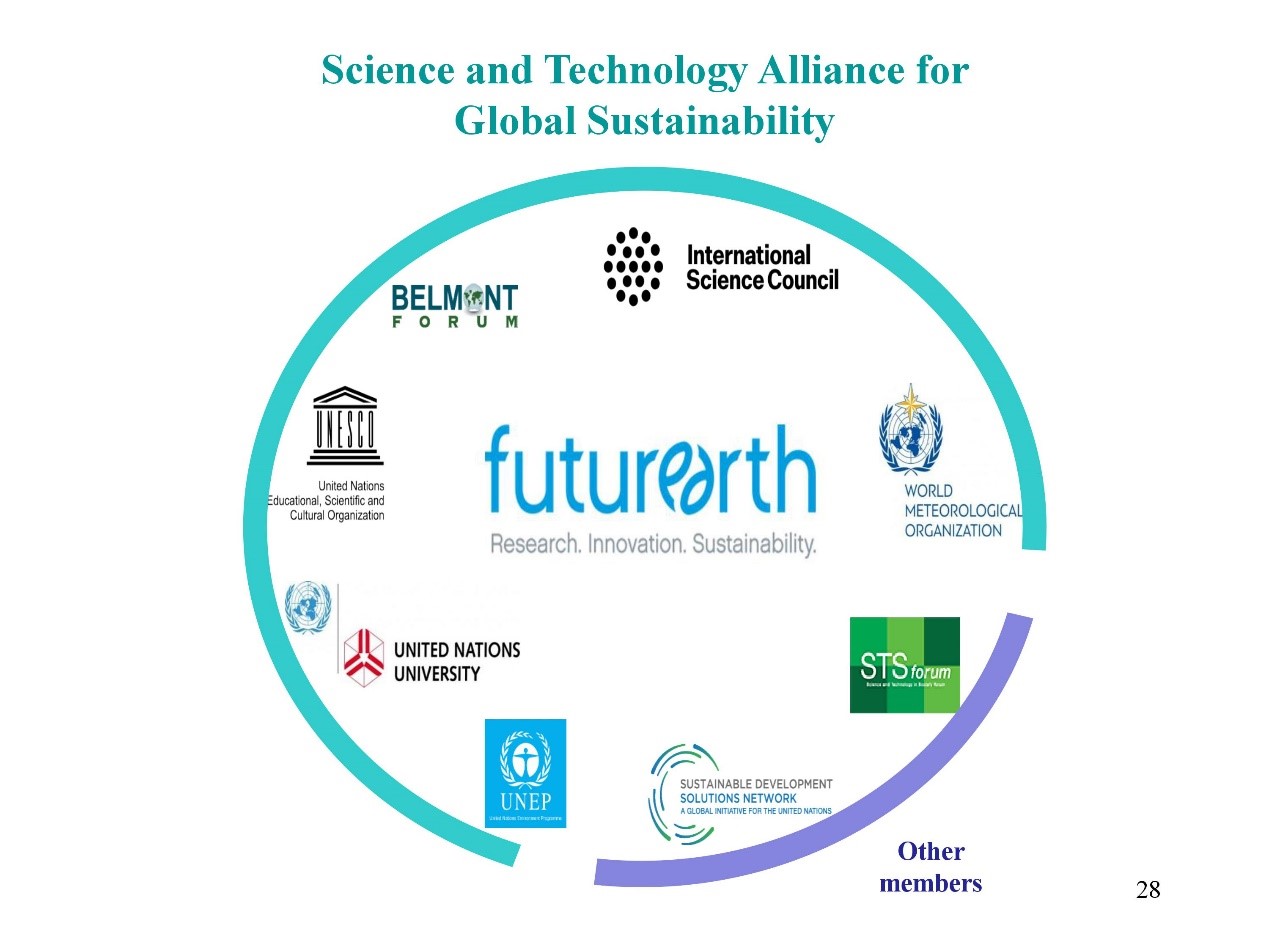
Talk by Jessica Chou: Taiwan Mobile as a Case Study for the Corporate Implementation of the SDGs

Ms. Jessica Chou shared that whilst many companies do not have a department dedicated to sustainable development work, Taiwan Mobile had set one up 12 years ago. The company subsequently came out with its vision of sustainable development in 2014 and developed targets for 2020, though it had achieved many of its targets by 2017. At the end of 2017, the company launched the Zetta Connected 2030 framework in part as a response to the 17 SDG goals. The name, "Zetta", was used because it refers to the ability to move very fast, which technological change exemplifies. However, Ms. Chou pointed out that due to this fact, SDG targets are therefore set every few years because of the challenge of keeping up with technological changes.
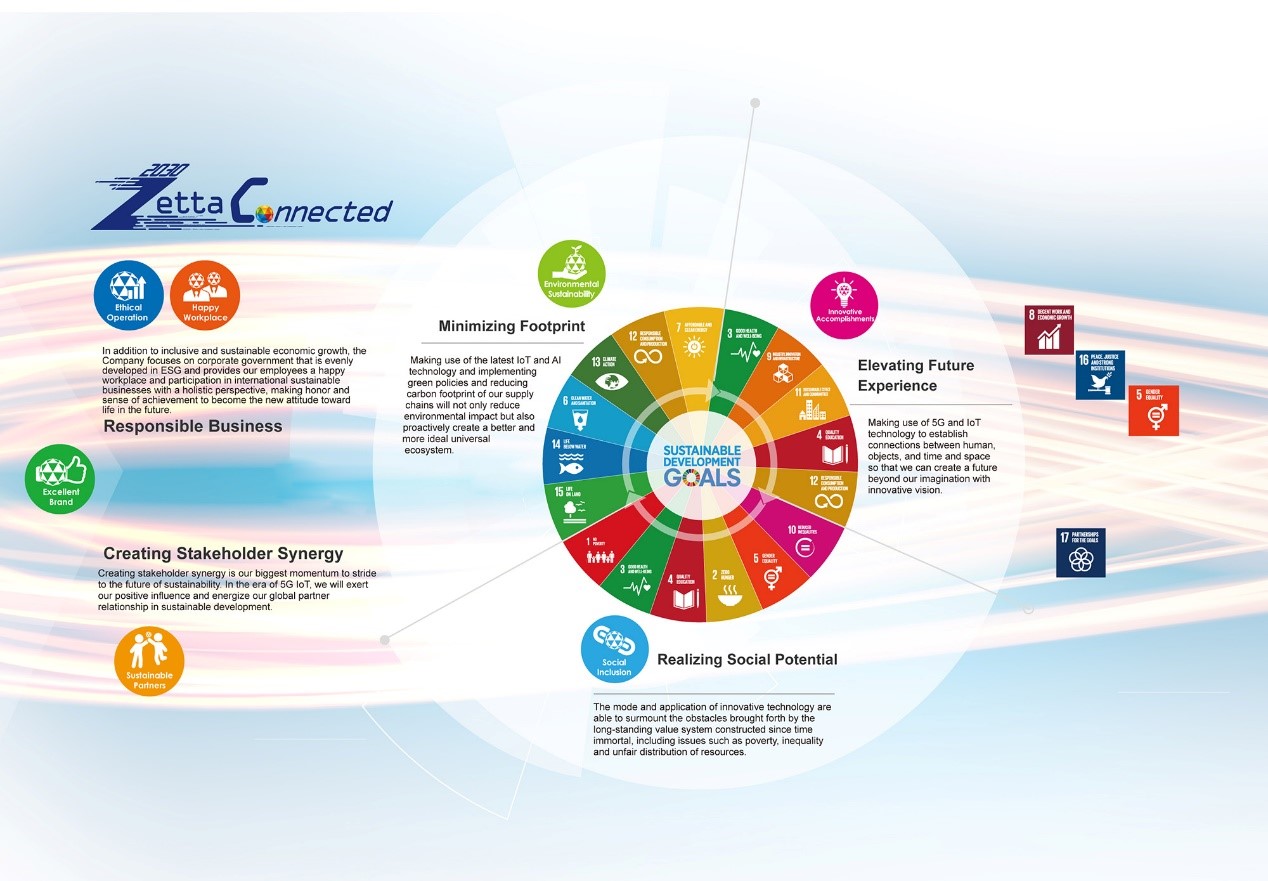
Ms. Chou shared that Taiwan Mobile believes that it is a leader in sustainable digitalization, and that it is driven by the principles of a loving humanity and loving Taiwan. Taiwan Mobile has also taken a bottom-up approach to address the SDGs, as such at the end of 2017, it conducted a 2-day workshop where representatives from all its departments were gathered to brainstorm on how Taiwan Mobile's operations can be aligned to the SDGs. Ms. Chou shared that 51 KPIs were developed for 11 SDGs, of which 90% have since been achieved. In addition, Taiwan Mobile has also started to use clean energy to power its operations, and targets to increase its capacity of renewable energy to 6,000 kW by 2030.
In addition, Taiwan Mobile also engages consumers in its green energy initiatives, such as via the 'Green Power for Charity' initiative, where part of the funds consumers spend at partner retailers are channeled into building solar PV systems at social welfare organizations Taiwan Mobile helps out at, such as the Fu-Huey Social Welfare Foundation in 2017 and the Chensenmei Social Welfare Foundation in 2018. Taiwan Mobile's rationale is that by involving consumers and their dollar contribution, this would enable them to be educated on the importance of green energy.
In addition, Taiwan Mobile has also worked with the Global e-Sustainability Initiative (GeSI) to publish a global report, 'Digital with Purpose', on how digital technologies can be deployed to accelerate the shift towards a fossil-fuel free economy and the achievement of the SDGs. Ms. Chou also pointed that privacy is an important issue especially in terms of technology, and that Taiwan Mobile is also aware of the issues. For example, current users who sign contracts are required to give blanket approval for the use of certain applications, though they should be given the right to opt in or out from different parts of the applications, and this is something Taiwan Mobile is looking to improve.
Question & Answer Segment

Responding to a question by an audience member on how development can be sustainable, and how the increase in costs (from energy costs and energy tax) to vulnerable groups should be managed, Prof. Nakicenovic explained that while people living in urban areas in general produce higher emissions than those in rural areas due to the former's energy demands, a global energy assessment his team conducted a few years ago found that there were variations between developed and developing countries, in that cities in the Global North were more energy efficient while those in the South had higher carbon footprints. While this presents as a concern for the development in the South, Prof. Nakicenovic pointed out that an increase in energy use could indicate that development is taking place and that as long as energy emissions are clean, the movement of people into cities is welcomed as this generally leads to improvements in human life. As such, it is still possible for economies to grow, and this growth does not in fact need to be one that is carbon or resource intensive. Prof. Nakicenovic pointed out that if the basket of goods used to assess development could include more virtual goods (where such goods could lead to the improvement of human life without increasing resource use, and where products are enhanced without the need for them to be thrown away or could be recycled, such as in a circular economy model), then this might not lead to less growth or development.
Prof. Nakicenovic further pointed out that while the tradition concept of urbanization is thought of as large scale to the extent of cities like Tokyo or Osaka, the reality is that most people live in small and medium-sized cities and thus more attention should be focused on these. Specifically, this is also an issue of governance because smaller cities face the challenge of not having enough political power, and governments therefore need to have clear guidelines for the transference of power, so as to enable local governments to have an equal level playing field.
In addition, Prof. Nakicenovic pointed out that equity, justice and dignity are also very important to the SDG agenda, and explained that while some SDG initiatives such as energy tax and energy pricing would result in increases to costs, on the other hand the global operating cost of energy have also been declining. Therefore, while some costs would increase in the short run, they will go down in the long run. He added that there is a need to also look at how people who will be impacted can be protected, of which it would be best to increase their incomes as the fundamental solution, followed by enhancing safety nets.
On another question on how bigger companies can be encouraged to adopt the transformations needed as they are more risk adverse, Prof. Nakicenovic explained that while small enterprises tend to be more innovative than big companies because the latter might not risk making drastic changes due to the structural changes that would be required, it should also be seen as an evolutionary process where innovation conducted by smaller enterprises would eventually lead to major successes that could become more widely adopted even by larger enterprises, and which could thereby lead to cheaper and better technologies. He pointed to the example of Volkswagen which said that if it were to transit into making electric cars, it would have to shed one-third of its labor force. However, Prof. Nakicenovic pointed to Europe's Smart Specialisation Strategy (S3) as a model that can be followed, where small enterprises are nurtured to develop new ideas and whereby the successful ones can then be replicated by big enterprises, so that this forms part of a holistic innovation process.

To read the first part of the article on Prof. Nakicenovic's sharing on the six transformations required to achieve the SDGs.
Part 1: The World in 2050 – Local Strategies to Achieve the Sustainable Development Goals